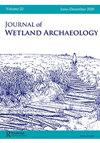Nasty, Brutish and Short?; The Life Cycle of an Iron Age Roundhouse at Black Loch of Myrton, SW Scotland
Q1 Arts and Humanities
引用次数: 11
Abstract
ABSTRACT Excavations at Black Loch of Myrton, Dumfries & Galloway are revealing the very well-preserved remains of an Iron Age settlement, the wetland context ensuring that the timber structures have remained intact and that the detritus of daily occupation survives for us to pick apart and understand. One of the structures in this settlement is an exceptionally well-preserved roundhouse, the material remains of which have been subjected to a barrage of analyses encompassing the insect, macroplant, bone and wood assemblages, soil micromorphology, faecal steroids, radiocarbon-dating and dendrochronology. These will enable us to address some of the key issues regarding the life cycles of Iron Age roundhouses, from conception and construction, use of internal space, nature of occupation and likely function, through to abandonment. Critically, we are now able to view that life cycle through the lens of a tightly-defined chronology bringing us close to the ‘ … short-term timescales of lived reality’ [Foxhall, L. 2000. “The Running Sands of Time: Archaeology and the Short-Term.” World Archaeology 31 (3): 484–498].肮脏、粗野、矮小?苏格兰西南部默顿黑湖铁器时代圆屋的生命周期
在默顿、邓弗里斯和加洛韦的黑湖进行的挖掘工作揭示了铁器时代聚落保存完好的遗迹,湿地环境确保了木结构的完好无损,日常活动的碎屑幸存下来,供我们拆开和理解。该聚落的其中一个结构是保存非常完好的圆屋,其材料遗迹经过了一系列分析,包括昆虫、大型植物、骨骼和木材组合、土壤微观形态、粪便类固醇、放射性碳定年和树木年代学。这将使我们能够解决一些关于铁器时代圆屋生命周期的关键问题,从概念和建造,内部空间的使用,职业性质和可能的功能,到废弃。关键的是,我们现在能够通过严格定义的年表来看待生命周期,使我们接近“……生活现实的短期时间尺度”[Foxhall, L. 2000]。"时间的流沙:考古学和短期"世界考古31(3):484-498。
本文章由计算机程序翻译,如有差异,请以英文原文为准。
求助全文
约1分钟内获得全文
求助全文
来源期刊

Journal of Wetland Archaeology
Arts and Humanities-Archeology (arts and humanities)
CiteScore
1.40
自引率
0.00%
发文量
6
期刊介绍:
The Journal of Wetland Archaeology publishes a wide range of contributions in all fields of wetland archaeology. It includes scientific and methodological features, geoprospection, environmental reconstruction, wetland hydrology, cultural aspects of wetland archaeology, as well as conservation, site management, legislation, and site protection. All periods and all geographic regions are covered.
 求助内容:
求助内容: 应助结果提醒方式:
应助结果提醒方式:


